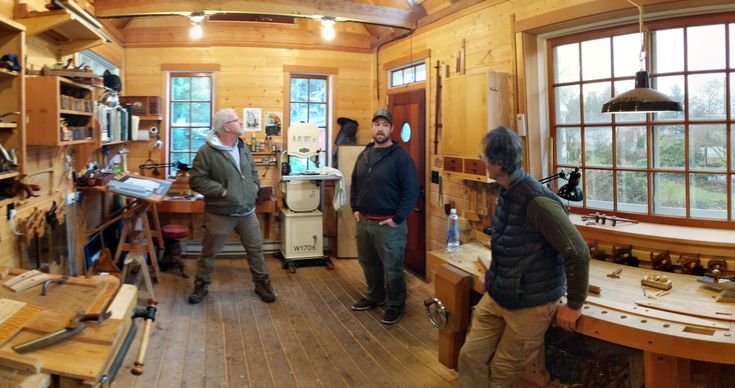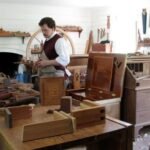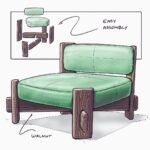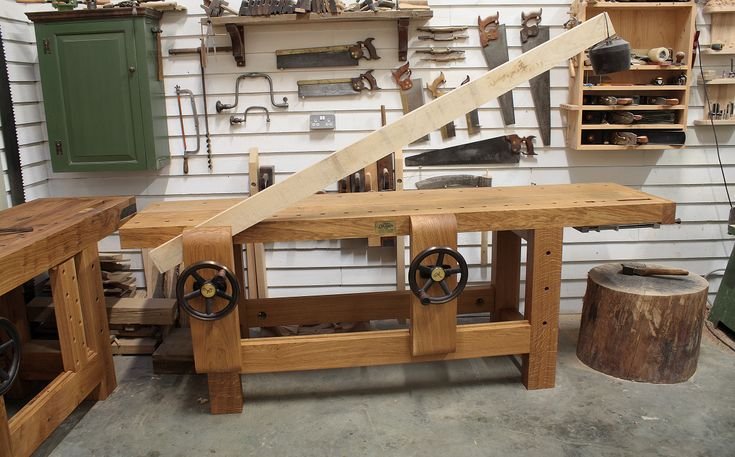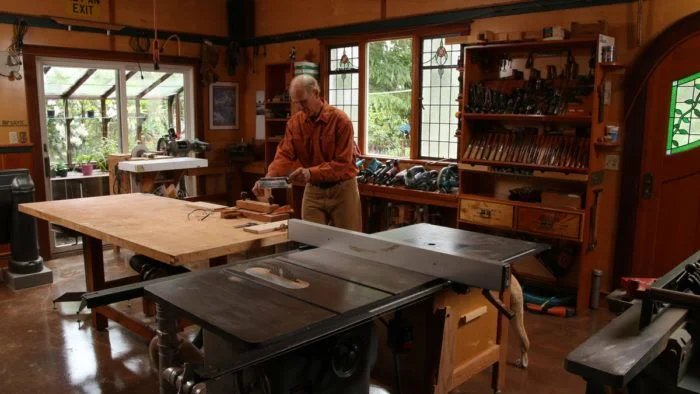The Heart of Wood: Tales from My Workshop
You know, there’s something special about working with wood. It’s like the tree has little stories to tell if you listen closely enough. The smell of fresh-cut pine—oh boy, it gets me every time. It’s warm and earthy, almost soothing. I’ve spent many a late evening in my garage, coffee cup in one hand and a chisel in the other, just feeling the grain beneath my fingers, dreaming up my next project.
There’s something about early American woodworking tools that just strikes a chord with me. I didn’t think much about them at first. To be honest, I didn’t even start out with hand tools. You know that feeling when you’re young and a bit naïve? I figured power tools would solve everything! But oh boy, did I learn a thing or two about that.
The Power Tool Trap
A few years back, I decided I wanted to build my first piece of furniture—a coffee table, of all things. Sounds simple, right? Well, I marched into the local Home Depot full of gusto, spat out a list of power tools I thought I needed, the usual suspects: a circular saw, a nail gun, a finish sander. By the end of my shopping spree, I was grinning ear to ear. I thought I was ready to take on the world.
Well, fast forward to a week later. I had cuts that were as crooked as a politician’s promises, and the wood glue was getting everywhere except where I wanted it to be! And that nail gun? Turns out it doesn’t just put nails in the wood; it also makes an awful mess if you miss the mark—it ricocheted off the wood and hit the wall. I laughed out loud—but let me tell ya, it wasn’t fun scraping that paint out of my wall afterward.
Rediscovering the Old Ways
After a couple of tries that looked like they’d survived a natural disaster, I almost gave up. That’s when I stumbled across some early American hand tools at a flea market nearby. There was this old guy there—a real character—who looked like he could’ve walked out of a historical documentary. He had all sorts of planes, chisels, and saws set up, dusty but still beautiful. I remember picking up a wooden hand plane; the weight just felt right in my hands. This was a tool that spoke to me.
He started showing me how to use these old tools properly, and the way he explained everything! He said, “With a good plane, you can make a board smoother than a baby’s bottom.” I chuckled at that, but there was truth there. You could practically hear the wood sighing as you worked on it, becoming something it was meant to be.
The First Success
So I went home with a few of those hand tools—a Stanley No. 4 plane and a set of old chisels—and my heart was racing. The next evening, with the sun dipping low and the garage filled with that sweet wood smell, I dug into a new project, using a piece of cherry wood I picked up from the local lumber yard; the color and deep veins were just gorgeous.
I learned quickly that using a hand plane takes a different kind of finesse. You could pressure how you pulled it just right to get a nice, smooth finish. And the sound? Oh man, that satisfying "shhhhhh" as the plane glided over the wood was music to my ears. After a few tries, I held my breath when I flipped the board over. I almost gave up there, too, but I took a second, inhaled that sweet, smoky scent, and kept going.
When I got it right, I laughed so hard it must’ve startled the neighbors. I pulled out my phone to snap a photo of my handiwork—smooth and shiny, with a finish that looked like it could belong in a fine furniture shop. I sat back and took it all in, coffee in hand, realizing how much I truly loved this process.
The Value of Patience
There’s a lesson in there somewhere, I think. It’s not always about getting it done fast or having the fanciest tools. Sometimes, the most valuable tools in your kit are the ones that slow you down and make you appreciate the craft. It’s about the time spent, the little mistakes, and that slow slide of a hand plane across wood that feels like magic.
Sure, I’ve had my fair share of frustrating projects, but those won’t stop me. I remember one time I was on a roll, feeling invincible, and decided I’d whip up some custom shelves. Well, let’s just say that my measurements were less than ideal, and those shelves took an unexpected detour to the floor rather than the wall. The sound of that wood crashing was like a sad symphony, but it taught me a lot about proper measuring and taking my time.
A Final Thought
So, if any of this resonates with you, if woodworking is calling your name, I want to tell you: just go for it. Seriously. Embrace those mistakes; they’re part of the journey. And maybe instead of rushing in with power tools, consider trying some of those simple hand tools. Sit down with that cup of coffee—or whatever you like to sip on—and listen to the wood. There’s a certain kind of peace that comes from working with your hands, grounding you in a way that’s hard to put into words.
So, here’s to happy projects, learning curves, and the sweet smell of sawdust. Get in that workshop and give it your all—you might be surprised at the warmth it brings to your heart.

